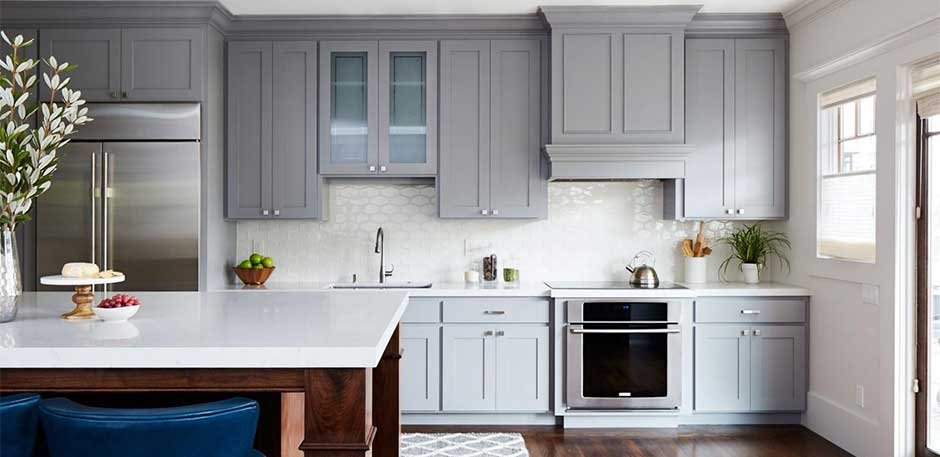The kitchen is the heart of any home, so it deserves to shine, but painting your kitchen cabinets can be daunting. You must prepare for all the nitty-gritty details of the painting, such as cleaning, sanding, priming, etc. Not to mention the painting makes your eyes water and your back ache. And then, of course, there is the matter of getting your supplies and budget in order.
Kitchen cabinet painting Las Vegas requires a professional to help you avoid all these headaches. They’ll carry out the process carefully and precisely to meet your wants. Are your kitchen cabinets long overdue for a revamp? Read to learn how to prepare your kitchen for your professional cabinet painting.
Cover Your Counters and Flooring
To protect your counters and floors, cover them with plastic sheets. According to SGI Property Management Gilbert it helps prevent paint from getting on your cabinets, which can be very difficult to remove later. If you have hardwood floors in your kitchen, you can also cover them with plastic sheeting. Ensure to leave enough room for people to walk around comfortably.
Removes Shelves, Drawers, Doors
Remove any hardware attached to the cabinet fronts or sides before painting them. If you keep your existing hardware, ensure it’s clean and dry before removing parts from your cabinets. Now is the time to do it if you’re replacing any hardware.
Assess the Condition of the Cabinets
Before starting any work on your cabinets, assess their current condition. Look at each cabinet individually and identify any damage. You may notice scratches or breakage in some areas, while others may be cracked or chipped away from normal wear and tear.
If there is any significant damage, consider replacing these damaged pieces before you begin painting your cabinets – this will help prevent any future issues with your paint job.
Clean Your Cabinets
Before painting, thoroughly clean all surfaces inside and out with a degreasing cleaner. Use a rag or sponge that you have dipped in a degreaser to wipe down these areas so that everything is clean and ready for paint. It ensures that there is no residue left behind on your cabinets which could lead to streaks or smudges when painted.
Remove Hardware
Remove any hardware from your cabinets using a screwdriver. The knobs, handles, and hinges can be reinstalled later once the paint has dried completely on the cabinets, but it’s best not to risk damaging them while they’re still wet.
If you want to keep a few pieces of hardware for future use, consider wrapping them in plastic bags or covering them with masking tape, so they don’t get damaged by paint splatters during your project.
Fill Holes And Cracks In Your Cabinets
If there are any holes or cracks in your cabinets, then it is best to fill them using an autobody filler before painting. Let it dry completely before painting over them. Apply a second coat if necessary and let dry again before proceeding with the rest of your project.
Sand Down Any Imperfect Surfaces
After removing all cabinet parts, use sandpaper or an electric sander to remove any dirt or marks left behind by cleaning products or previous attempts at painting. Sand down every surface so that when you apply primer and paint later on, there won’t be any bumps or uneven patches on your cabinets.
Prime Your Cabinets
Suppose you want your new cabinets to last, prime them first. Apply primer before painting so that the paint bonds better with the wood surface and is more resistant to wear and tear. If you don’t prime your cabinets, they may start peeling off within a few years. Primer also seals small cracks or holes in your wood so that moisture doesn’t get trapped and cause problems.
Caulk and Fill Gaps
Caulk seals out moisture and keeps your cabinets looking new. Use a caulk gun to seal any gaps between the cabinets and countertop. Apply the caulk to both sides of the gap, so it’s nice and smooth. You can also use a putty knife or finger to smooth any bumps or ridges in the caulking. Once you’ve finished all the gaps, let it dry for 60 minutes. After 60 minutes, sand down, then vacuum. Lastly, wipe using a tack cloth.
Suppose you decide to tackle the painting project by yourself, set aside time to prepare everything for the painting. If you don’t take the time to prepare correctly, you’re likely to run into problems (like messy results) and end up wasting more time than necessary. Painting your kitchen cabinets can add a fresh look, substantial value, and sometimes peace of mind.



